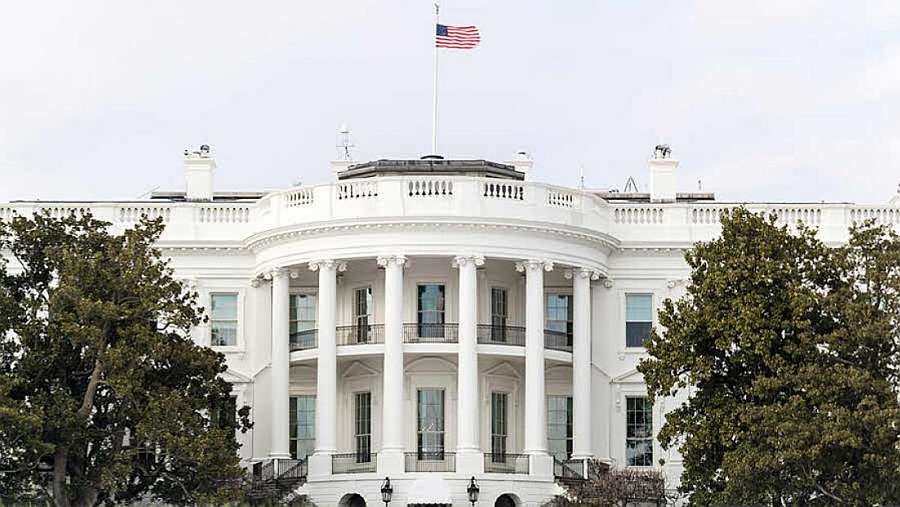President Fleshes Out Infrastructure Plan

Republicans and some industry players were lining up to praise President Trump's proposed $1.5 trillion infrastructure plan, which the White House fleshed out Monday (Feb. 12).
The plan is to allocate $200 billion in direct federal funding, which the White House said will translate to $1.5 trillion in state, local, Tribal and private infrastructure investment. A quarter of that direct funding will go to rural infrastructure, including broadband.
Related: Budget Bill Includes Rural Broadband Bucks
The majority of that $50 billion (80%) will go to state governors in the form of block grants. The rest goes to rural performance grants; states could apply for those. One of the evaluation criteria for the grants would be "increased broadband availability and investment."
In addition, a new category of "rural broadband service facilities" would be added to the list of projects that could be financed with tax-exempt bonds.
“Too often, regulatory barriers make it harder and more expensive to build out broadband than it needs to be — to the detriment of American consumers," said FCC chair Ajit Pai in a statement. "That’s why this plan is a welcome and strong call to action. I stand ready to work with the administration and Congress to turn this plan into a reality as we continue to bridge the digital divide and extend 5G digital opportunity to all Americans.”
"To win the global race to 5G, we must fundamentally reform our infrastructure deployment rules. It is great to see the Administration’s infrastructure plan put a priority on efforts that would expedite deployment," said Republican FCC Commissioner Brendan Carr. "We must ensure that our regulatory structures are 5G Ready."
Broadcasting & Cable Newsletter
The smarter way to stay on top of broadcasting and cable industry. Sign up below
"ACA applauds President Donald J. Trump for proposing an infrastructure plan that includes spending $50 billion to enhance infrastructure, including broadband, in rural areas," said American Cable Association president Matt Polka. "Ensuring all Americans have access to high-performance broadband is important and requires government engagement at many levels. For instance, the enactment of the recent tax law and the existing programs run by the FCC help. And, it is essential that government focus on removing the many barriers that discourage private investment in broadband.
"But, even with these efforts, some areas will remain unserved, and the only way to deliver broadband to them is with the assistance of direct government subsidies," Polka added. "We are pleased that the president's plan recognizes this fact and sets aside money that can be used by the states for this purpose..."
Cable/broadband operators also wanted to make the point that generally speaking broadband infrastructure is in great shape, except where a businss caes is lacking, which is where the government needs to step in in a targeted way.
“As the nation’s leading broadband industry, we applaud the Administration’s proposal to invest in new infrastructure – including the potential to expand broadband to unserved homes in rural communities – that can support a growing economy and provide new opportunities for all Americans," said NCTA-The Internet & Television Association. "Unlike our congested roads, crumbling bridges and failing power grid, our nation’s broadband infrastructure is an American success story which powers an internet economy that is second to none. American consumers have witnessed enormous advances in the speed and reach of wired and wireless internet networks, driven by $1.5 trillion in private investment over the last 20 years. Today, 85 percent of U.S. homes can have access to internet speeds of 300 Mbps or faster, including gigabit offerings in hundreds of urban and rural communities.
“Despite this remarkable progress, there are still some parts of the country – most often in less dense, geographically remote areas – where market forces alone haven’t been able to connect all homes. That is why we welcome the Administration’s efforts to reduce barriers to investment in rural America and stand ready to work with Congress and federal agencies on ways to induce more rural investment and promote greater efficiency and accountability in government broadband programs. Most importantly, any funding should be dedicated to connecting those homes without any access to broadband. It should be a national imperative to connect the unserved so that all Americans can enjoy the benefits of this technology."
Related: President Makes Rural Broadband Deployment a Priority
Sen. John Thune (R-S.D.), chair of the Senate Commerce Committee, said: “Through this guidance and letting Congress have the opportunity to write bipartisan legislation, President Trump has offered us direction to meet infrastructure needs in our nation’s states, cities, and rural communities. Aligning federal infrastructure funding with local priorities and looking at other impediments to building would increase accountability and help us meet our most critical infrastructure needs faster. I look forward to working with my ranking member, Sen. Nelson, and other colleagues on both sides of the aisle to discuss and incorporate their ideas and priorities into legislation.”
Related: Trump Nominates Rural Utilities Service Chief
USTelecom CEO Jonathan Spalter said: "Closing the digital divide, particularly in our nation’s most difficult to reach rural areas, requires dedicated and adequate capital – both financial and political. Broadband providers have invested more than $1.6 trillion over the past 20 years to connect our communities, but significant, direct support from the federal government is critical to bringing broadband’s benefits to all. USTelecom is determined to work with Congress and the Administration on getting our 21st century infrastructure priorities right, including dedicated funding to ensure broadband connectivity for all Americans.”
Contributing editor John Eggerton has been an editor and/or writer on media regulation, legislation and policy for over four decades, including covering the FCC, FTC, Congress, the major media trade associations, and the federal courts. In addition to Multichannel News and Broadcasting + Cable, his work has appeared in Radio World, TV Technology, TV Fax, This Week in Consumer Electronics, Variety and the Encyclopedia Britannica.

